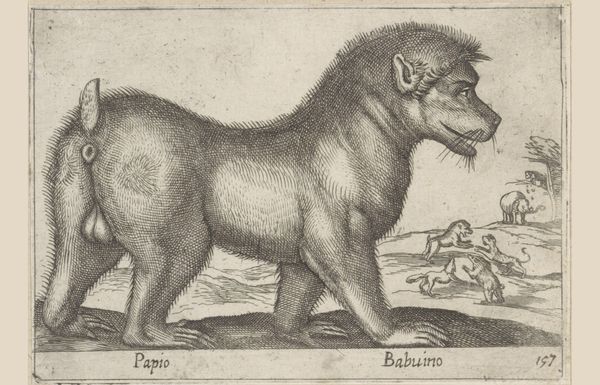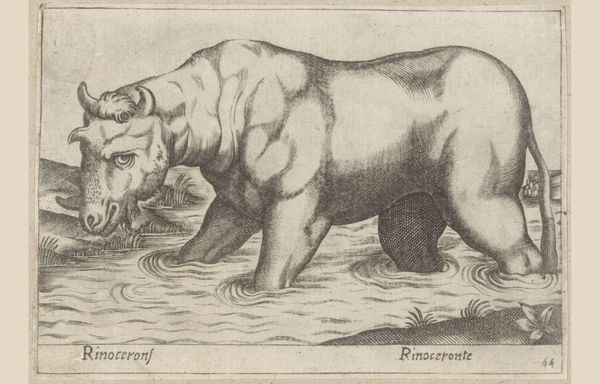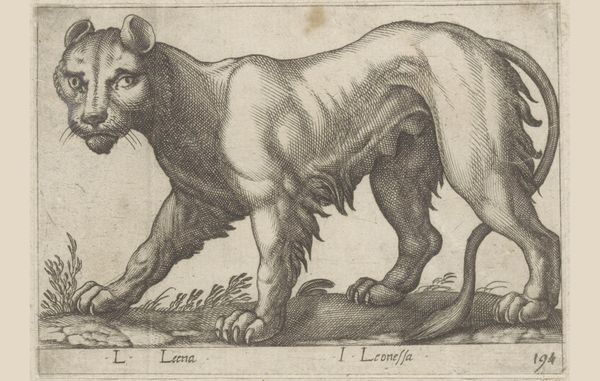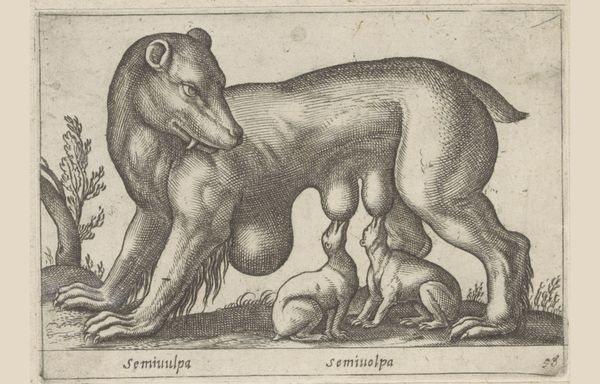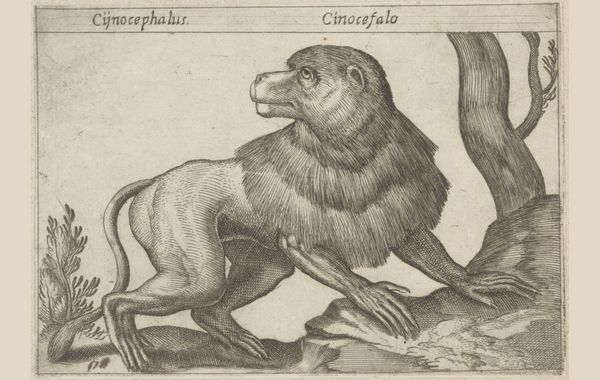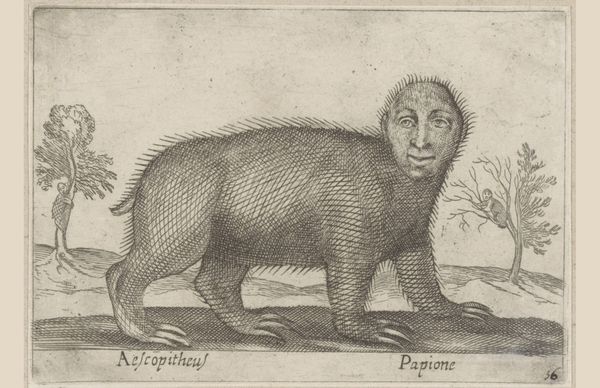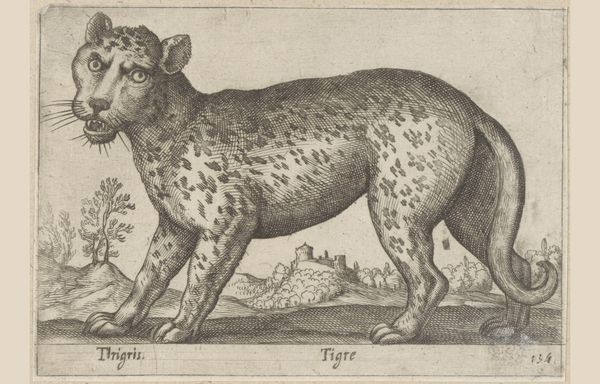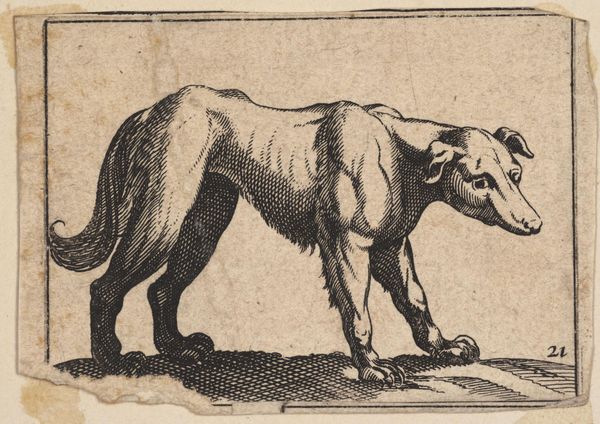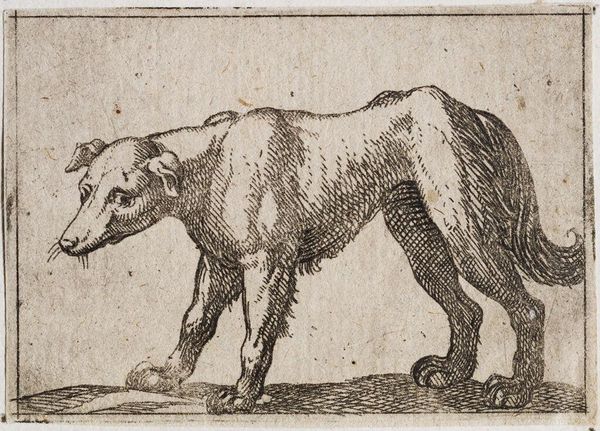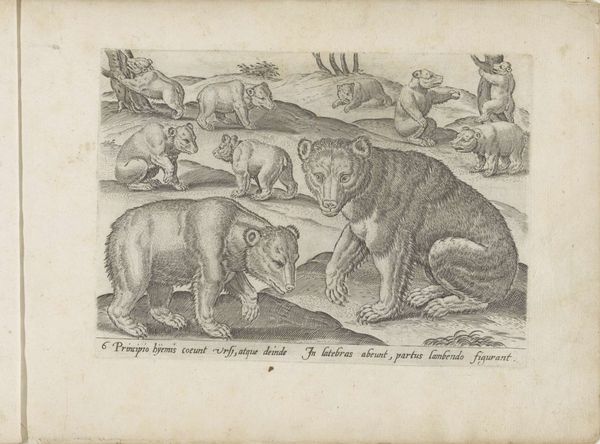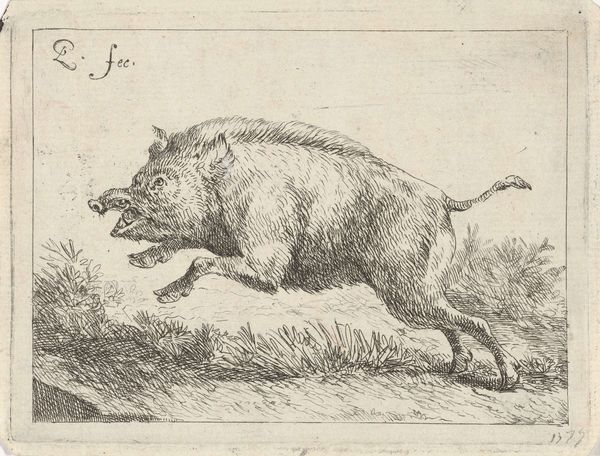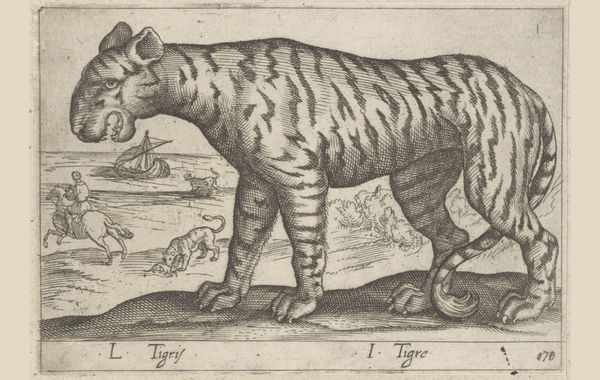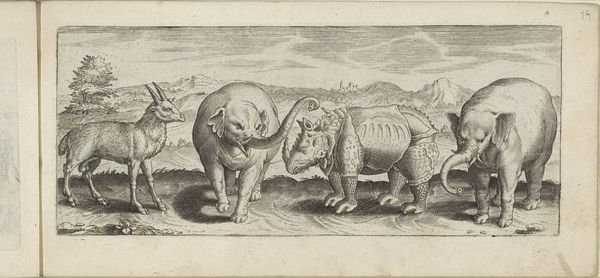
print, engraving
#
animal
# print
#
old engraving style
#
caricature
#
11_renaissance
#
personal sketchbook
#
engraving
#
realism
Dimensions: height 95 mm, width 137 mm
Copyright: Rijks Museum: Open Domain
Antonio Tempesta made this print of a hippopotamus sometime between 1575 and 1630, using etching and engraving. These processes involve applying varnish to a metal plate, and then using a fine needle to scratch away the coating. The plate is then submerged in acid, which bites into the exposed metal. Tempesta has used these techniques to convey the hippo's bulk, building up areas of tone with fine, closely placed lines. Look closely, and you’ll see how he varied the marks to suggest its rounded form. The linear quality lends an interesting texture to the animal's hide. What interests me most about this work is its status as a printed image. In Tempesta's time, prints like these were important ways of circulating information, particularly about exotic subjects. We might consider it as a prototype of the mass media images that shape our view of the world today. The work involved was considerable, but made a great impact.
Comments
No comments
Be the first to comment and join the conversation on the ultimate creative platform.
